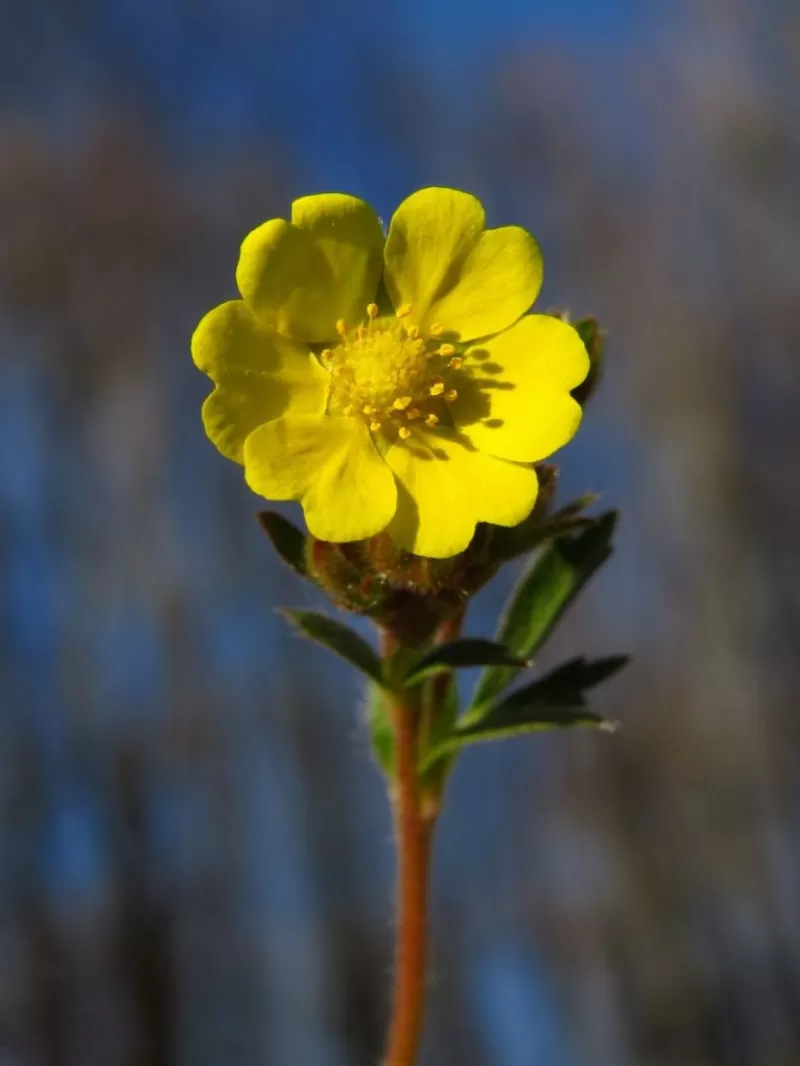- Creeping cinquefoil (Potentilla reptans) is an invasive weed with bright yellow, heart-shaped flowers
- It spreads rapidly through creeping stems and autumn seeding, competing for resources
- Identification: Look for rounded, serrated leaves in groups of 5-7 and yellow 5-petaled flowers
- Control methods include manual removal, mulching, and chemical treatments as a last resort
- Sustainable gardening practices favor manual removal and mulching over chemical interventions
Introduction
As I strolled through my garden one spring morning, a flash of yellow caught my eye. There, nestled among my carefully tended plants, was a charming little flower with heart-shaped petals. “How lovely!” I thought, admiring its delicate beauty. Little did I know that this innocent-looking bloom would soon become the bane of my gardening existence.
- Growing Amaranth in Pots: A Hassle-Free Guide for Bountiful Greens
- Japanese Maple Bugs: A Gardener’s Guide to Keeping Your Tree Pest-Free
- 5 Reasons Why Your Rhododendron Isn’t Growing (And How to Fix It)
- When Can You Transplant Tulips? A Comprehensive Guide
- Stargazer Lily: Pro Tips for Stunning Blooms in Your Garden
 Awwww…Aren't the heart-shaped petals lovely?
Awwww…Aren't the heart-shaped petals lovely?
You're reading: Creeping Cinquefoil Weed: A Beautiful Menace in Your Garden
That, my friends, was my first encounter with creeping cinquefoil (Potentilla reptans). While it may seem like a delightful addition to your garden at first glance, this hardy and invasive weed can quickly turn into a formidable adversary for even the most experienced gardeners. If you’ve found yourself battling this persistent plant, you’re not alone. Let’s dive into understanding this beautiful menace and explore effective ways to reclaim your green space.
Understanding Creeping Cinquefoil Weed
The Plant’s Origins and Nature
Potentilla reptans, the scientific name for creeping cinquefoil, tells us a lot about its nature. “Potentilla” is the ancient name for a genus encompassing over 300 plant species, while “reptans” means creeping or crawling – a perfect description of its growth pattern.
In some areas, creeping cinquefoil is actually encouraged to grow along riverbanks, adding a touch of sophistication to the scenery with its cheery yellow flowers. However, its robust nature means it requires constant attention to keep it in check.
 Well, until you notice their population posing threats to your houseplants, which you've poured heart and soul into tending.
Well, until you notice their population posing threats to your houseplants, which you've poured heart and soul into tending.
While creeping cinquefoil can be beneficial in stabilizing sloping ground with its taproots and runners, it’s a different story when it starts to invade your carefully cultivated garden. I learned this the hard way when I noticed it prospering like a marching army among my prized plants.
Potential Confusion with Other Plants
It’s worth noting that creeping cinquefoil can sometimes be mistaken for silverweed (Argentina anserina). Both produce yellow flowers with similar petal numbers and sizes. However, the leaves are quite distinctive, with silverweed featuring long creeping red stolons and possessing medicinal properties.
Read more : Black Spots on Arugula: 5 Common Causes and Solutions
 Creeping Cinquefoil can be mistaken for Silverweed (image), which possesses medicinal properties.
Creeping Cinquefoil can be mistaken for Silverweed (image), which possesses medicinal properties.
Seasons and Habitat of Creeping Cinquefoils
Creeping cinquefoil is a hardy plant that thrives even in cold winters. It prefers full sunlight, which is why it often flourishes in lawns. However, don’t be fooled – it can still pose problems in shady areas. This adaptable plant can grow in various soil types and becomes most visible in spring, leafing early after winter. You might often spot it alongside Lesser celandine (Ficaria verna) during this time.
How to Identify Creeping Cinquefoil
Identifying creeping cinquefoil is crucial in managing its spread. Here are the key features to look out for:
- Leaves: Rounded, hairless, and serrated, arranged in groups of five to seven from a single node at the end of a long stem.
- Flowers: Bright yellow, heart-shaped with five petals, resembling flat buttercups. They measure 2-3cm wide and emerge from the leaf axils.
- Height: If left unattended, the flowers can reach heights of up to 50cm – an unusual sight in a lawn!
When To Be Concerned
Creeping cinquefoil spreads rapidly through creeping stems and autumn seeding, often infiltrating lawns from flower beds and vice versa. This tenacious weed competes with other plants for light, water, and nutrients, making it a challenge to control. Its low-growing habit and ability to form dense mats make it a common sight in hedge rows, along banks, and in grassy areas.
How to Control Creeping Cinquefoil
Manual Removal
Using your hands to pull out creeping cinquefoil is a quick and straightforward approach. However, it doesn’t guarantee complete removal from your soil. New plants will keep sprouting from the remaining root systems. For more effective manual removal:
- Water the soil beforehand to make it easier to work through.
- Use a wire rake to lift the weed.
- Apply mulch, such as well-rotted manure or wood chips, to suppress regrowth.
 You can remove them by hand, with Dandelion Weeder tools recommended.
You can remove them by hand, with Dandelion Weeder tools recommended.
The Royal Horticultural Society (RHS) suggests using tools designed specifically for weeding dandelions, which can be a real time-saver.
Smothering Method
Another approach recommended by the RHS is essentially suffocating the plant:
- Trim away the foliage.
- Cover the soil with cardboard.
- Add a thick layer of organic matter (like bark or wood chips) about 20cm (8in) deep.
- Alternatively, use heavy-grade biodegradable mulch matting.
Read more : Growing Bougainvillea in Georgia: A Comprehensive Guide
 Apply a thick layer of organic matter to the ground over the next few months to suppress any remaining root systems.
Apply a thick layer of organic matter to the ground over the next few months to suppress any remaining root systems.
While this method can be effective, it requires patience as it may take years to see results.
Chemical Control
As a last resort, systemic weed killers like glyphosate can be used. However, exercise extreme caution to avoid harming adjacent plants. Consider wrapping nearby plants in plastic before spraying to minimize impact.
Remember:
- Using herbicides can harm nearby plants and affect soil health.
- If you plan to plant in the area soon, these chemicals won’t disappear quickly.
- Always follow instructions strictly.
- Multiple applications may be necessary for effective control.
 These beautiful flowers appear to be pleading for mercy! Yet, they show no mercy to our plants as they compete against them.
These beautiful flowers appear to be pleading for mercy! Yet, they show no mercy to our plants as they compete against them.
Conclusion: Reclaiming Your Garden from Creeping Cinquefoil
Controlling creeping cinquefoil requires persistence and a multi-faceted approach:
- Regular weeding weakens regrowth and helps manage the issue.
- In flower borders, annual mulching and soil improvement can deter cinquefoil and benefit other plants.
- For lawns, practicing good horticulture and regular feeding can prevent the problem from escalating.
- While chemical options exist, prioritizing manual removal and mulching aligns with sustainable gardening principles.
Remember, the key to managing creeping cinquefoil is early identification and consistent control measures. With patience and the right techniques, you can reclaim your garden from this beautiful but troublesome weed.
Have you encountered creeping cinquefoil in your garden? Share your experiences and tips in the comments below. Let’s learn from each other and create thriving, weed-free gardens together!
Source: https://thelittle.garden
Category: Organic gardening

